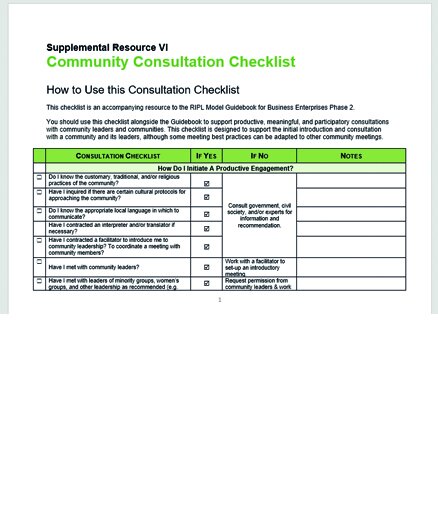Tools to Identify
The tools in this section are resources for companies to identify actual and potential adverse human rights impacts.
United Nations Guiding Principle No 18: In order to gauge human rights risks, business enterprises should identify and assess any actual or potential adverse human rights impacts with which they may be involved either through their own activities or as a result of their business relationships.
This process should:
Draw on internal and/or independent external human rights expertise;
Involve meaningful consultation with potentially affected groups and other relevant stakeholders, as appropriate to the size of the business enterprise and the nature and context of the operation.
















































